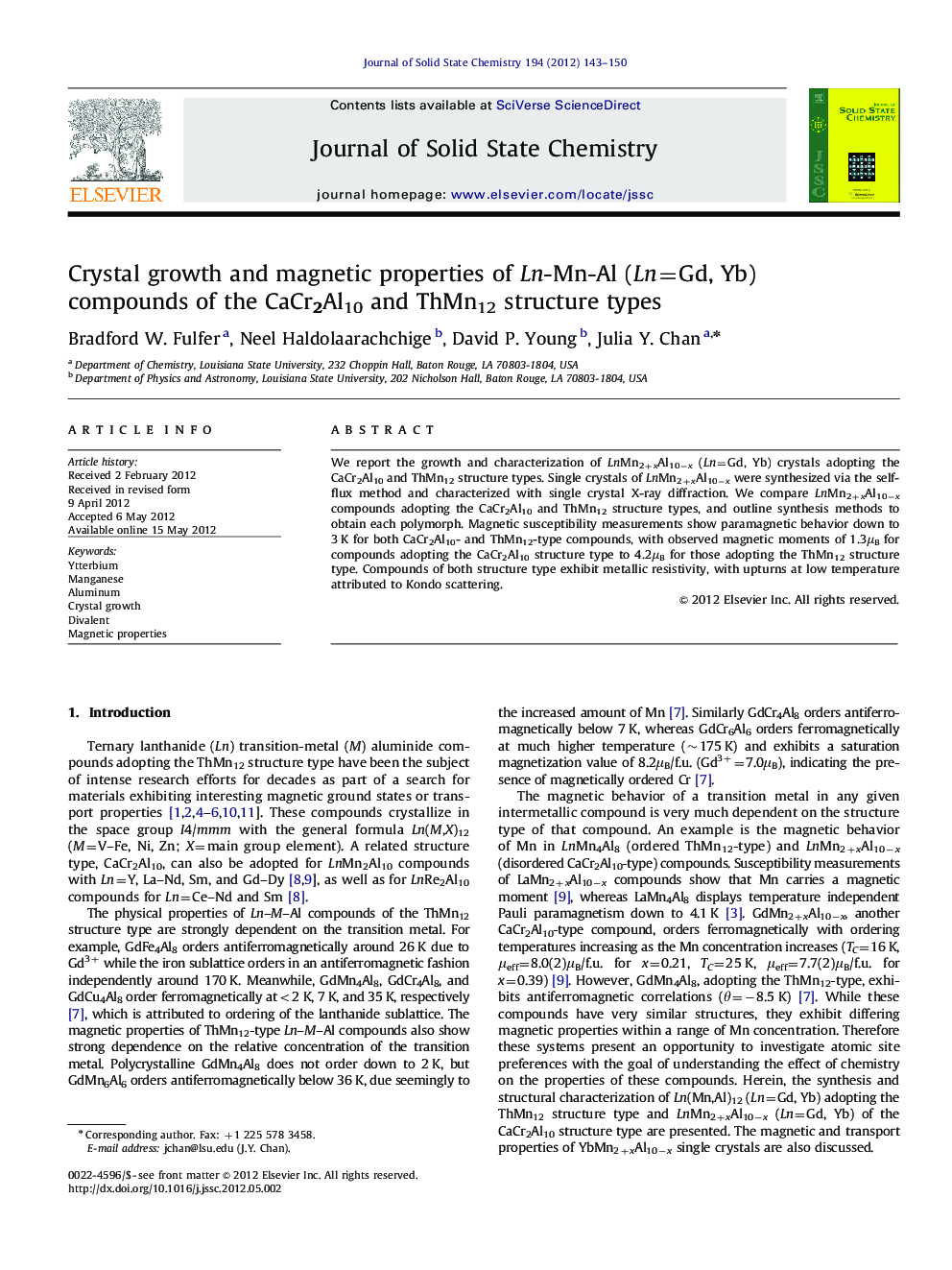| Article ID | Journal | Published Year | Pages | File Type |
|---|---|---|---|---|
| 1330259 | Journal of Solid State Chemistry | 2012 | 8 Pages |
We report the growth and characterization of LnMn2+xAl10−x (Ln=Gd, Yb) crystals adopting the CaCr2Al10 and ThMn12 structure types. Single crystals of LnMn2+xAl10−x were synthesized via the self-flux method and characterized with single crystal X-ray diffraction. We compare LnMn2+xAl10−x compounds adopting the CaCr2Al10 and ThMn12 structure types, and outline synthesis methods to obtain each polymorph. Magnetic susceptibility measurements show paramagnetic behavior down to 3 K for both CaCr2Al10- and ThMn12-type compounds, with observed magnetic moments of 1.3μB for compounds adopting the CaCr2Al10 structure type to 4.2μB for those adopting the ThMn12 structure type. Compounds of both structure type exhibit metallic resistivity, with upturns at low temperature attributed to Kondo scattering.
Graphical abstractWe report the growth and characterization of LnMn2+xAl10−x (Ln=Gd, Yb) crystals adopting the CaCr2Al10 and ThMn12 structure types. Single crystals of LnMn2+xAl10−x were synthesized via the self-flux method and characterized with single crystal X-ray diffraction. We compare LnMn2+xAl10−x compounds adopting the CaCr2Al10 and ThMn12 structure types, and outline synthesis methods to obtain each polymorph. Magnetic susceptibility measurements show paramagnetic behavior down to 3 K for both CaCr2Al10- and ThMn12-type compounds, with observed magnetic moments of 1.3μB for compounds adopting the CaCr2Al10 structure type to 4.2μB for those adopting the ThMn12 structure type. Compounds of both structure type exhibit metallic resistivity, with upturns at low temperature attributed to Kondo scattering.Figure optionsDownload full-size imageDownload as PowerPoint slideHighlights► We have grown Ln (Mn,Al)12 (Ln=Gd, Yb) single crystals of the ThMn12 and CaCr2Al10 structure types by flux growth methods. ► Synthetic parameters to stabilize two structure types are discussed. ► Compounds exhibit metallic resistivity with Kondo upturns below 50 K.
